Underwater monitoring is crucial to understand the growth processes and performance of artificial structures in the vulnerable coral reef ecosystem. Digital underwater monitoring takes high-precision scans from close-range underwater video-and photogrammetry and underwater laser scanning. The purpose is to perform digital structural analysis (FEA, hydrodynamic modelling) and survey (growth, species abundance) on digital twin models of the coral reef system. Challenges for digital twin models of reef systems are related to the complex form of reef formations and corals, visibility conditions underwater, and to the display of massive 3D point could models for non-experts.
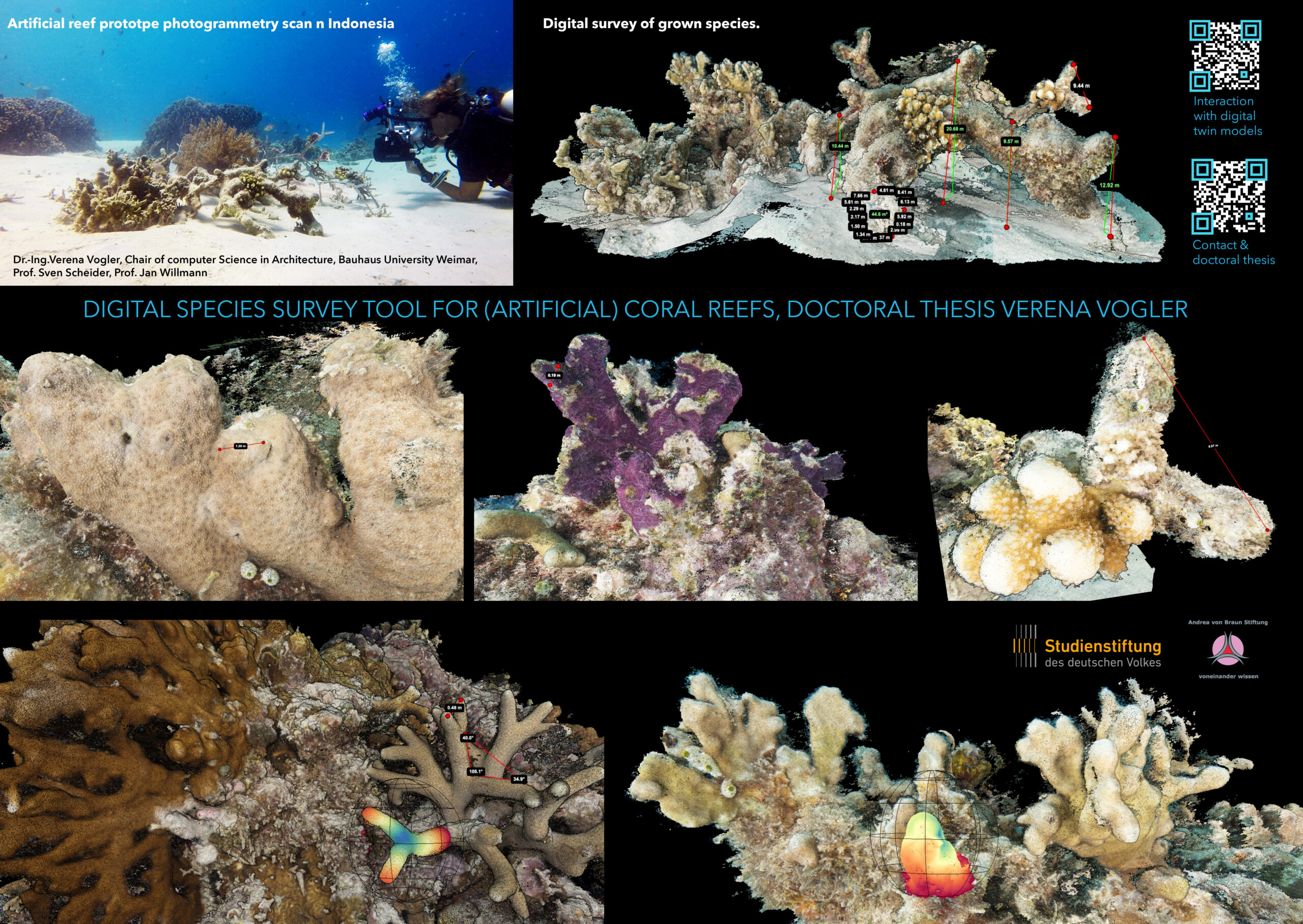
The monitoring tool facilitates a full digital survey for high-precision scans of the artificial reef prototypes. Open the library of all scanned models in your web browser and select one model. Select one model, and the Potree viewer user interface opens. There you can increase the resolution of the digital 3D model. Under “Appearance” you can increase the number of points to see the original resolution of the scans/ digital twin model.
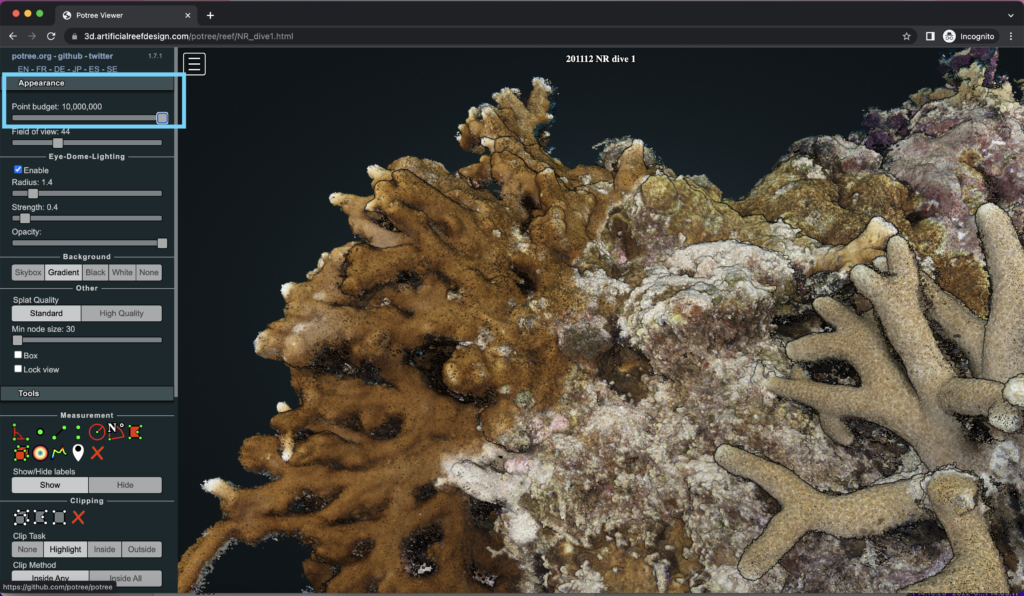
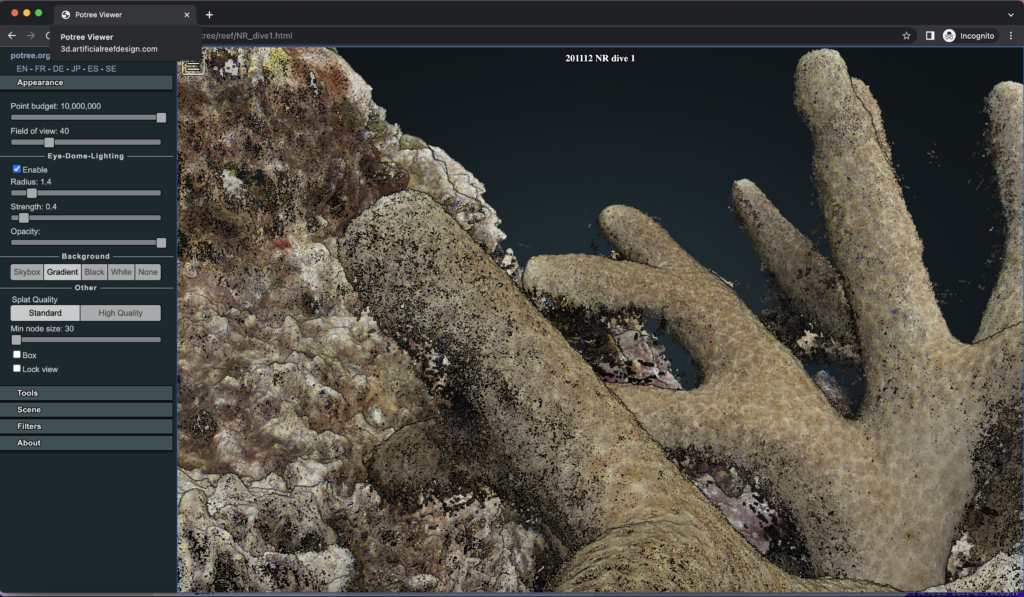
Use the Potree viewer toolset library to measure distance, area, and volume in these high-precision models.

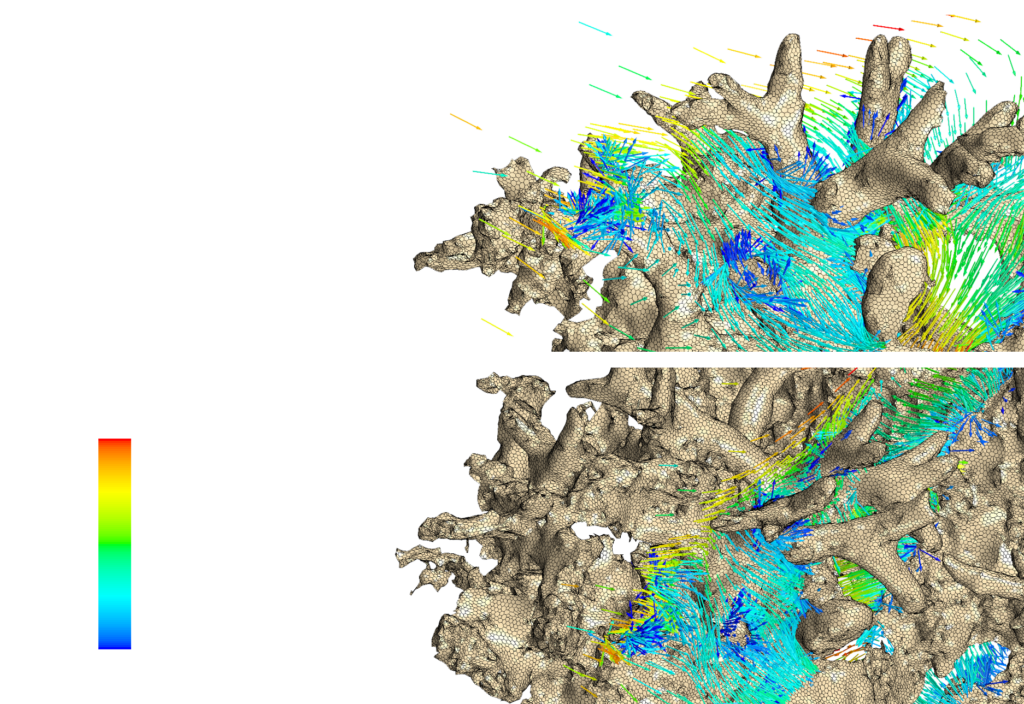
You can survey also other 3D models, e.g., the digital twin model of the artificial reef prototype 1.
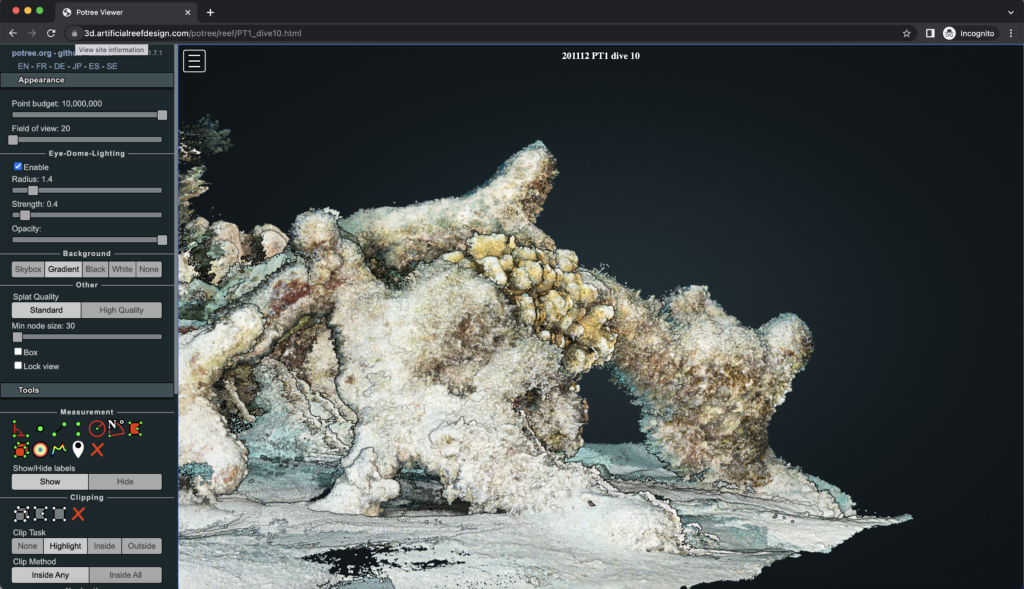

digital survey process of the converted and uploaded massive point cloud data: (a) For instance, height measurements can be extracted to quantify the growth progress; (b) area measurements can determine the size of newly grown coral patches or the footprint; and (c) volume measurements can help to identify the mass of the newly created material (such as CaCO3 and corals) (V. Vogler 2022, Fig. 5.56).
To better understand material configurations and growth processes of the Calcium carbonate layer around sheet metal components, a CT scan was made. The results are relevant to build digital simulation models for Biorock cathodes from sheet metal.

References:
Vogler, V. 2022. “A New Framework For Artificial Coral Reef Design.” JoDLA Journal of Digital Landscape Architecture, Issue 7-2022, 524–537. Berlin/Offenbach: Wichmann Verlag im VDE VERLAG. e-ISSN 2511-624X.
Vogler, V. 2022. “A framework for artificial coral reef design: Integrating computational modelling and high precision monitoring strategies for artificial coral reefs – an Ecosystem-aware design approach in times of climate change.” Dissertation Bauhaus-Universität Weimar, 1–243. https://doi.org/10.25643/bauhaus-universitaet.4611.
Vogler, V. 2019. “Close Range Underwater Photogrammetry for High Resolution Survey of a Coral Reef: A Comparison between Reconstructed 3-D Point Cloud Models from Still Image and Video Data.” Tagungsband zur Konferenz Go-3D 2019. Stuttgart/ Rostock: Fraunhofer Verlag: 107–20. ISBN 978-3-8396-1499-0.